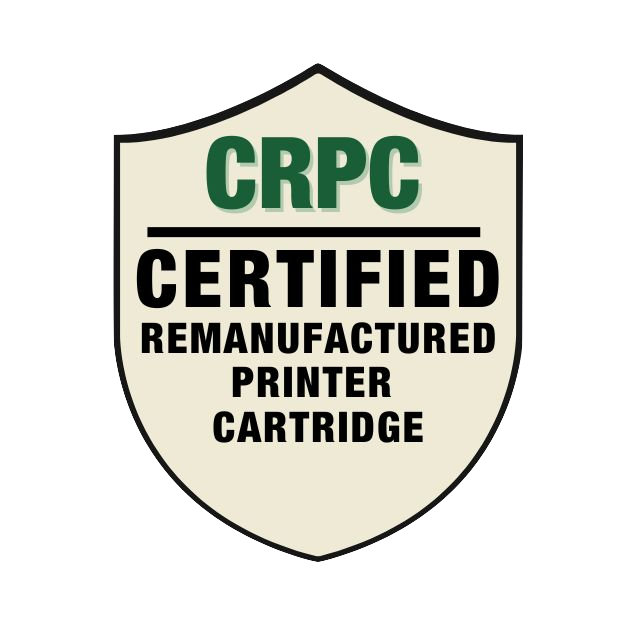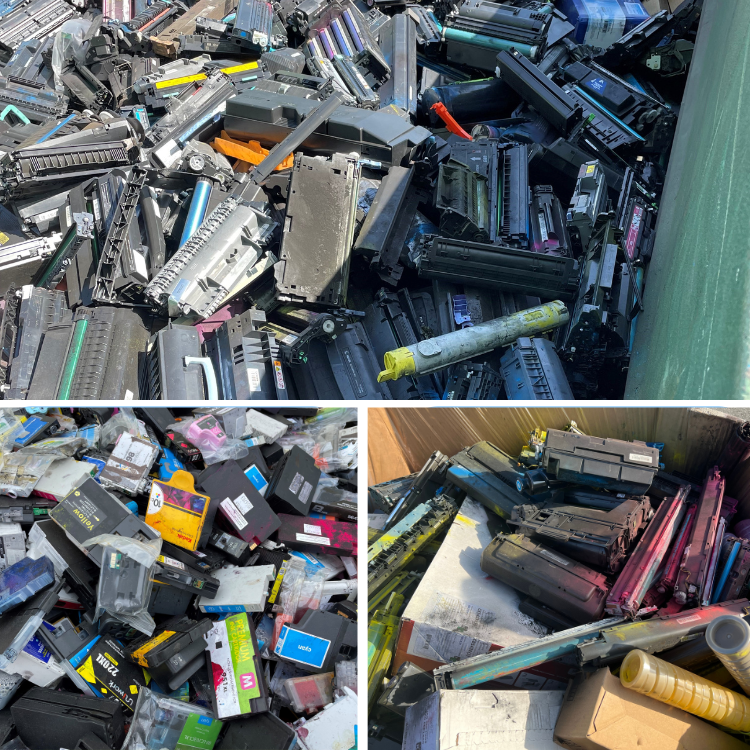Why Remanufacturing Matters
Print cartridges are ubiquitous in offices, homes, and schools, but their production and disposal have a substantial environmental impact. Manufacturing a new cartridge involves energy-intensive processes and often requires shipping from overseas, adding to the carbon footprint. Remanufacturing, on the other hand, involves cleaning and refilling used cartridges, reusing plastic and metal components to extend their lifecycle. This process not only reduces waste but also conserves resources. In this post, we explore the environmental advantages of remanufacturing, focusing on savings in CO2 emissions and oil consumption, particularly in the context of local remanufacturing in Los Angeles.
CO2 Emissions Savings
Producing a new toner cartridge generates significant CO2 emissions. For a typical cartridge weighing 0.7 kg, with 0.5 kg of plastic and metal parts and 0.2 kg of toner, the emissions break down as follows:
- Plastic shell manufacturing: 0.67 kg CO2
- Toner production: 3.2 kg CO2 for 0.2 kg of toner
- Transportation: 0.1 kg CO2 for shipping from overseas
In total, a new cartridge produces approximately 3.97 kg of CO2. Remanufacturing, however, avoids the emissions from manufacturing new plastic parts and transportation, resulting in only 3.2 kg of CO2 from toner production. This leads to a saving of about 1.8 kg of CO2 per cartridge when remanufacturing locally.
Oil Savings
Oil is a critical resource in cartridge production, especially for creating plastic components. For a new cartridge:
- Plastic production: 0.636 liters of oil for 0.5 kg of plastic
- Toner production: Additional oil is required, but since remanufacturing still needs new toner, this cost remains.
By reusing the plastic shell, remanufacturing saves approximately 0.6 liters of oil per cartridge.
Comparative Table: OEM vs. Remanufactured Cartridge Impacts
| Component | OEM CO2 (kg) | OEM Oil (liters) | Remanufactured CO2 (kg) | Remanufactured Oil (liters) |
|---|---|---|---|---|
| Plastic Part | 0.67 | 0.636 | 0 (reused) | 0 (reused) |
| Toner | 3.2 | 1.21 | 3.2 (new) | 1.21 (new) |
| Transportation | 0.1 | Negligible | 0 (local) | 0 (local) |
| Total | 3.97 | 1.846 | 3.2 | 1.21 |
| Savings | 1.8 kg CO2 | 0.6 liters oil | ||
*Note: Savings are rounded estimates based on full lifecycle considerations, including production efficiencies and transportation.
Local Remanufacturing Benefits: Why Los Angeles Wins
Remanufacturing locally in Los Angeles provides additional environmental benefits. By avoiding overseas shipping, we eliminate the CO2 emissions associated with transporting cartridges from manufacturing hubs like China. This saves an extra 0.1 kg of CO2 per cartridge. Additionally, local remanufacturing reduces oil consumption related to transportation fuel, contributing further to sustainability.
Uncertainties and Limitations: What We Don't Know
While the data strongly supports the environmental benefits of remanufacturing, there are some uncertainties. Lifecycle assessments can vary based on assumptions about production processes, energy sources, and transportation methods. For example, emissions from toner production may differ depending on manufacturing locations, and shipping emissions can fluctuate with transport efficiency. Additionally, remanufacturing itself requires some energy and resources, though significantly less than producing a new cartridge. Despite these variables, the overall evidence consistently favors remanufacturing as the more sustainable option.
Conclusion: A Simple Choice for a Greener Future
Choosing remanufactured print cartridges, especially those produced locally, can lead to substantial environmental savings—approximately 1.8 kg of CO2 and 0.6 liters of oil per cartridge. For businesses and individuals who use multiple cartridges annually, these savings can make a significant impact. By opting for remanufactured cartridges, you're not only reducing waste but also supporting sustainability and helping to protect the planet for future generations.
Ready to make a difference? Choose remanufactured cartridges for your next print job and contribute to a more sustainable future.

CRPC Research Team
Environmental Research Division
